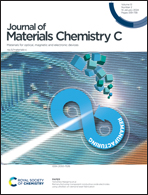Designing CMOS compatible efficient ohmic contacts to WSi2N4via surface-engineered Mo2B monolayer electrodes
Abstract
Forming ohmic contacts between metals and semiconductors is critical to achieving high-performance and energy-efficient electronics. Here we investigate the interface properties of WSi2N4 contacted by Mo2B, O-modified Mo2B (Mo2BO2) and OH-modified Mo2B (Mo2B(OH)2) nanosheets using density functional theory simulations. We show that WSi2N4 and Mo2B form n-type Schottky contacts with barrier heights that are robust against external electric fields. In contrast, functionalizing Mo2B with O and OH causes the work function to energetically down- and up-shift significantly, thus forming both n-type and p-type ohmic contacts with WSi2N4, respectively. The possibility of achieving both p-type and n-type ohmic contacts immediately suggests the role of surface-engineered Mo2B as a key enabler towards WSi2N4-based complementary metal–oxide–semiconductor (CMOS) device technology in which both n-type and p-type devices are needed. We further demonstrate the emergence of quasi-ohmic contact with ultralow lateral Schottky barrier and zero vertical interfacial tunneling barriers in Mo2B(OH)2-contacted WSi2N4 – a feature rarely found in other 2D/2D metal/semiconductor contacts, thus demonstrating surface-engineered Mo2B as a promising electrode to WSi2N4 with high charge injection efficiency. These results offer design insights useful for the development of high-performance 2D semiconductor CMOS device technology.



 Please wait while we load your content...
Please wait while we load your content...